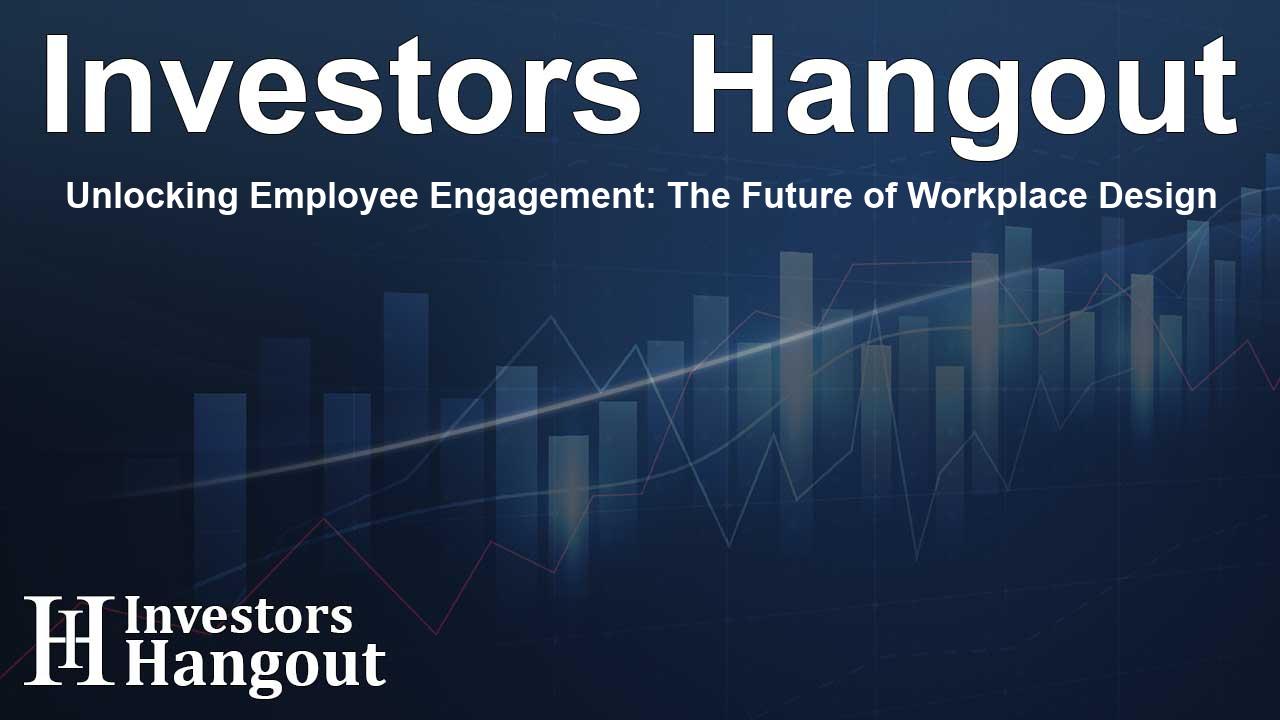Unlocking Employee Engagement: The Future of Workplace Design

Adapting to the Modern Workplace
The modern workplace is a constantly evolving landscape, and organizations are recognizing the need to adapt to this new environment to retain and engage their workforce. Companies that thoughtfully design their hybrid work models are not just responding to changes; they are proactively shaping the future of work. Recent findings indicate that making these adjustments can lead to significant improvements in productivity and employee satisfaction.
Key Factors Influencing Employee Experience
Survey results indicate that to foster a thriving hybrid work environment, companies must focus on providing employees with a more personalized workspace. U.S. workers highly value the following elements:
1. Personalization and Choice
Organizations should prioritize creating workspaces that allow for individual preferences, enabling employees to tailor their environment to fit their working style.
2. Technologically Enhanced Office Layouts
Smart office designs that incorporate technology can drastically improve collaboration and communication amongst teams.
3. Accessible Collaboration Spaces
Providing efficient access to meeting and collaboration areas can significantly enhance teamwork and productivity. Employees seek quick and effortless ways to connect with their peers.
Challenges Faced by Employees
Despite the positive aspects of hybrid work, employees continue to face several challenges at the workplace:
Distractions and Noise
Many workers find that noise levels and distractions in the office negatively impact their focus.
Rigid Policies
Strict reporting to the office can stifle motivation and contradict the desire for a more flexible work culture.
Information Inefficiencies
Struggles to locate colleagues or vital information can lead to frustration, emphasizing the need for better organizational systems.
Access Limitations
Inadequate meeting spaces limit collaboration opportunities, hindering productivity.
Designing Spaces for Performance
To truly excel, hybrid workspaces must be designed with performance in mind, rather than merely accommodating physical presence. Different employee levels have distinct needs; while those in entry-level positions might require more structure, senior staff often benefit from opportunities for face-to-face collaboration. Clear policies regarding hybrid work are crucial to avoid clashes between individual autonomy and organizational expectations.
As Dan Moscatiello, CEO North America & Global Head of Enterprise Workplace Solutions at SPS, notes, "A well-planned environment using modern technology and role-specific flexibility is essential for maintaining engagement and productivity. Organizations must offer compelling workplace experiences to attract and retain top talent, or risk losing them to competitors."
Enhancing Retention and Satisfaction
Workplace design plays an integral role in keeping talent satisfied and committed to their jobs. Research indicates that a staggering 59% of U.S. employees would contemplate leaving if they encounter inefficient or frustrating conditions at work. Certain sectors, like the legal field, exhibit a remarkably high mobility risk, underscoring the critical need for supportive workplaces.
Executives are on the lookout for seamless integration of technology, while entry-level employees lean towards flexible work arrangements and clear instructions. This diversity of expectations illuminates the challenge of creating an inclusive workplace that caters to a multi-generational workforce. A one-size-fits-all approach is no longer sufficient; organizations must strive to cultivate environments conducive to everyone’s success.
Future Workplaces Must Emphasize:
1. A focus on promoting concentration and collaboration, which directly correlates with improved productivity.
2. Flexibility to accommodate various working styles, leading to heightened employee engagement and commitment.
About SPS
SPS is a frontrunner in the field of business transformation, leveraging technology to empower companies in their hybrid work initiatives. Their innovative Enterprise Workplace Solutions foster improved productivity and flexibility. SPS's array of Technology Business Solutions merges cutting-edge technology with extensive process expertise, allowing organizations to navigate digital transformation efficiently. Headquartered in Zurich, this dynamic company operates in over 20 nations, especially focusing on sectors like banking, healthcare, and insurance. With a dedicated workforce of more than 8,500 individuals, SPS enjoys a high reputation reflected in its Net Promoter Score. Their commitment lies in connecting people with the information they need and transforming data into impactful insights for better outcomes.
About WORKTECH Academy
WORKTECH Academy stands at the forefront of exploring the future of work and the workplace. This influential global platform connects experts from various domains, providing insights, case studies, and analyses that span people, culture, design, and technology. Since its inception in 2016, it has combined digital content with real-world events to create exclusive networking opportunities for professionals.
Frequently Asked Questions
What is the goal of hybrid work models?
The primary goal of hybrid work models is to balance employee flexibility with organizational productivity through tailored work environments.
How can personalized workspaces impact employee satisfaction?
Personalized workspaces can enhance employee satisfaction by allowing individuals to create an environment that aligns with their personal preferences and working style.
Why is technology important in modern workplaces?
Technology streamlines communication and collaboration, making it easier for teams to connect and work effectively, especially in hybrid settings.
What challenges do U.S. employees face in hybrid workplaces?
Many U.S. employees struggle with distractions, rigid policies, and difficulties accessing necessary resources or spaces for collaboration.
How does workplace design influence employee retention?
Effective workplace design significantly impacts employee retention by creating environments that enhance overall satisfaction and reduce the desire to leave for better opportunities.
About The Author
Contact Kelly Martin privately here. Or send an email with ATTN: Kelly Martin as the subject to contact@investorshangout.com.
About Investors Hangout
Investors Hangout is a leading online stock forum for financial discussion and learning, offering a wide range of free tools and resources. It draws in traders of all levels, who exchange market knowledge, investigate trading tactics, and keep an eye on industry developments in real time. Featuring financial articles, stock message boards, quotes, charts, company profiles, and live news updates. Through cooperative learning and a wealth of informational resources, it helps users from novices creating their first portfolios to experts honing their techniques. Join Investors Hangout today: https://investorshangout.com/
The content of this article is based on factual, publicly available information and does not represent legal, financial, or investment advice. Investors Hangout does not offer financial advice, and the author is not a licensed financial advisor. Consult a qualified advisor before making any financial or investment decisions based on this article. This article should not be considered advice to purchase, sell, or hold any securities or other investments. If any of the material provided here is inaccurate, please contact us for corrections.
